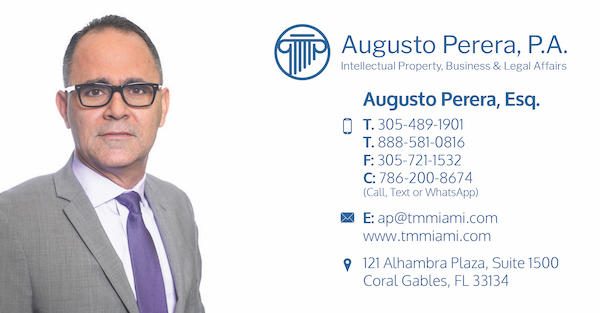In the United States trademark law is based on the common law first to use in commerce theory.
“Common law” trademark rights are acquired automatically when a business uses a mark in commerce and are enforceable in state courts. Marks registered with the U.S. Patent and Trademark Office are given a higher degree of protection in federal courts than unregistered mark. However, both registered and unregistered trademarks are granted some degree of federal protection under the Law.
Generally, the following are acceptable forms of use of the mark in commerce:
For products: The mark must appear on the products, the packaging for the products, a container for the products, or on displays or banners associated with the products, and these products must be sold or transported in commerce.
For services: The mark must be used or shown in the sale or advertising for the services and said services must be offered in commerce.
Under Section 15 U.S.C. §1057 (c) and §1141f (b), the filing of any application for registration in the Principal Registry, including an application for intent to use, constitutes a constructive use of the mark, provided that the application becomes a registration.
Only three circumstances can override constructive use in a priority dispute: (1) Common law use in the US Prior to the applicant’s filing date with the United States Patent and Trademark Office (“USPTO “), including use analogous to the use of a registered trademark; (2) an earlier filing date with the USPTO; or (3) a foreign application filed before the U.S. application filing date and within six months of the foreign filing date, a U.S. application under Section 44 (d) is filed with the USPTO.
The only contingent factor to depend on the priority of constructive use is that the trademark application must mature into a registration. If not, constructive use priority will not apply.
“Incontestability”
Section 15 of the Trademark Law, 15 U.S.C. §1065, establishes a procedure by which the exclusive right to use a registered trademark on or in connection with the products or services covered by the registration may become “incontestable”, if the owner of the registration files an affidavit or statement indicating that the mark has been in continuous use in commerce for a period of five years after the date of registration.
Under §33 (b) of the Act, 15 U.S.C. §1115 (b), if the right to use the mark has become incontestable under §15, then the registration is conclusive proof of the validity of the trademark and its registration, of the ownership of the mark by the registrant and of the exclusive property of the owner right to use the registered trademark in commerce, subject to certain defenses and exceptions.
If a registration reaches the status of UNCONSTABLE, it means that it can only be attacked on the following grounds: abandonment, if it becomes generic and / or functional, or fraud. All cancellation causes have been closed, including priority.
In conclusion, even in situations where a third party started using the mark before you do, there are ways to establish and solidify your trademarks rights through continuous use and registration.
I have helped countless small to medium size businesses navigating the issues of priority use, constructive use, and incontestability to achieve protection of their marks even when there is a third party who started using the mark before. I’d like to help you too by protecting your rights to trademarks, copyrights, and other intellectual property rights in the US and foreign jurisdictions before someone does.



